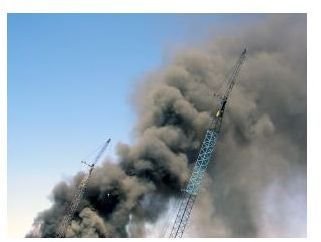Easy Disaster Recovery Plan: Getting Your Project Back on Track
Why Does Your Basic Project Require an Easy Disaster Recovery Plan?
Have you ever heard the old adage, life is what happens between plans? How about this – are you familiar with Murphy’s Law? You know, the one that says “Anything that can go wrong will go wrong?” If you’re looking at this article, chances are, things have gone wrong, horribly wrong with your project. Perhaps an electrical surge wiped your server’s hard drive or severe weather set your project team behind schedule.
Whatever the problem is, you can recover from it. It’s not enough to dive back into the project where you left off or start over. Instead, like everything in project management, the best thing you can do is formulate a plan. In this case, you’ll want to have a plan in place preferably before disaster strikes so that employees will know what to do in the advent of…the inevitable.
Image Courtesy of https://www.sxc.hu/gallery/keb
1. Assess the Situation
Before you do anything, you need to assess the situation. There are two things that you and your team need to accomplish during this process:
- Define the disaster. This may seem basic, but unless you can put a name on what went wrong, where it went wrong, and why, it’s going to be difficult to create your easy disaster recovery plan. Instead, you may be way off course and find yourself with a larger disaster. So, put first things first. Perform a root cause analysis to get to the bottom of the disaster. If your company was affected by a natural disaster, you should still take inventory of what needs to be fixed, and whether damage could have been prevented.
- Undertake a risk analysis. All projects should have a risk analysis performed in order to manage the project’s risk factors. However, projects that have already been stricken by disaster are especially in need of a risk assessment. How did the crisis affect other parts of the project? What is at stake if you continue the project? What is at stake if you start over? By undertaking the risk analysis ahead of time, in conjunction with looking at the root causes for the disaster, you can save yourself a headache, and potential project failure, in the future. If you are undertaking the risk analysis before disaster has stricken, then you can come up with a disaster recovery plan for the most likely occurring risks.
2. Define Your Disaster Recovery Plan’s Scope
Once you’ve defined the disaster, and looked at the risks involved with the disaster recovery, then you should have no problem defining the scope of the disaster recovery plan. When defining your scope, you’ll want to make sure that the only things included in your recovery plan scope relate to the disaster and to getting back on track after the disaster.
3. Identify Key Stakeholders and Have a Clear Plan of Communication
It is vital that you be sure you know who the stakeholders are, and how the stakeholders will be informed should things go awry in your project. Again, if you’re creating a just-in-case recovery plan, this will be a great help should things go wrong. If you’re forming an ad hoc plan because things have already gone wrong, then it will be important that you know who you need to notify and include in the recovery process.
4. Designate Teams and Team Member Responsibilities
Who will be on the disaster recovery project team? What will they do? You need to be sure you know who will be on the recovery team and what their roles will be. Further, when putting together a team for disaster recovery, it is vital that team members work together well and communicate well. Review project team evaluations to determine what the best set of employees will be for your disaster recovery efforts.
5. Develop a Protocol for What to Do
Finally, you will want to put together your plan. The easiest way to do this is to think of the disaster recovery plan as having three parts: before the disaster, during the disaster, and after the disaster. If you are putting this plan together after a disaster has stricken, then you will naturally only be focusing on after the disaster. If you are putting the plan together as a safety measure, then you will want to have routines defined for preventing the worst, protocols in place for when the disaster happens, and a general plan for getting back on your feet.
For example you might have the following categories:
- Prevention
- General routines to prevent injury
- Routines to prevent loss of property
- Checks to ensure mechanical and technical resources are in proper working order
- During
- Protocols for ensuring all staff members are safe
- Protocols for ensuring the safety of data and project items
- After
- Ways to test for damage
- Protocols for requesting funds
- Communication
- Replacing equipment and information
- Returning to normal operational standards
Depending upon the industry you are in, your protocol may look different from this list. The important part is to take time to recover from the disaster properly - otherwise you could be setting yourself up for even greater problems in the future.
